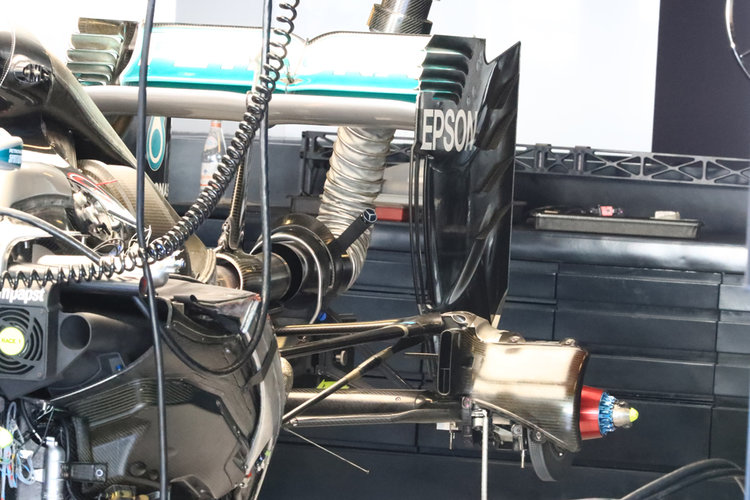Scuderia Ferrari have queried the use of the hydraulic linked third element suspension unit, implemented by the likes of the Mercedes AMG Petronas Formula One Team and Red Bull Racing, which could see their designs come under scrutiny ahead of the 2017 season.
In a letter sent to F1 Race Director Charlie Whiting as well as all F1 teams before Christmas, Ferrari have questioned the legality of such systems, which use a hydraulic linked suspension to incorporate a heave unit element, as opposed to the spring assisted third/heave damper method that the majority of other teams still use following the FIA’s ban on FRIC suspension back in 2014.
Using this method allowed those teams to use the movement from the suspension to create hydraulic pressure that would create an energy store. This energy could then be used to their advantage, by manipulating the suspension, when required.
In the case of Mercedes, it is used to maintain the car’s balance through corners, by controlling the car’s aerodynamic platform. Whilst Red Bull use it to bump up the effectiveness of its high static rake concept, which enables the rear to lower back down once it goes past a specified load point, suppressing the rear wing to boost straight-line speed.
The reasoning behind the Maranello based squad’s intrigue has been dressed up as an enquiry from the teams Technical Director Simone Resta, who stated he is looking to bring in a FRIC style system, which would work without a physical connection between the front and the rear of the car, but in doing so he has also managed to question the legality of the concepts used by Ferrari’s main competitors in the process.
Resta purports to be keen to understand whether this sort of system, and therefore others like it, would contravene article 3.15 of F1’s technical regulations, which bans moveable aerodynamic devices that could aid the car’s aerodynamic characteristics, as he explained to Autosport.com recently.

World © Octane Photographic Ltd. Mercedes AMG Petronas W07 Hybrid – Rear wing and suspension.
“We are considering a family of suspension devices that we believe could offer a performance improvement through a response that is a more complex function of the load at the wheels than would be obtained through a simple combination of springs, dampers and inerters.
“In all cases they would be installed between some combination of the sprung part of the car and the two suspension rockers on a single axle, and achieve an effect similar to that of a FRIC system without requiring any connection between the front and rear of the car.
“All suspension devices in question feature a moveable spring seat and they use energy recovered from wheel loads and displacements to alter the position of the heave spring.
“Their contribution to the primary purpose of the sprung suspension – the attachment of the wheels to the car in a manner which isolates the sprung part from road disturbances – is small, while their effect on ride height and hence aerodynamic performance is much larger, to the extent that we believe it could justify the additional weight and design complexity.
“We would therefore question the legality of these systems under Art. 3.15 and its interpretation in TD/002-11, discriminating between whether certain details are ‘wholly incidental to the main purpose of the suspension system’ or ‘have been contrived to directly affect the aerodynamic performance of the car’.”
The two key areas Ferrari marked out as points of interest for Whiting to mull over are:
“1) displacement in a direction opposed to the applied load over some or all of its travel, regardless of the source of the stored energy used to achieve this.
“Or
“2) a means by which some of the energy recovered from the forces and displacements at the wheel can be stored for release at a later time to extend a spring seat or other parts of the suspension assembly whose movement is not defined by the principally vertical suspension travel of the two wheels.”
Whiting’s response confirmed Ferrari’s suspicions that any such system would indeed contravene the regulations.
“In our view any suspension system which was capable of altering the response of a cars’ suspension system in the way you describe in paragraphs 1) and 2) would be likely to contravene article 3.15 of the F1 technical regulations.”
This confirmation from Whiting does not automatically make such systems illegal, but it does allow for closer scrutiny and questioning of the designs, leaving those F1 teams effected with a dilemma over whether to continue developing the system and risk it being banned, or change to an alternative set-up, which could make them much less competitive.
Both Mercedes and Red Bull began using this style of system in 2016, so it will be interesting to see if it is indeed now outlawed.



